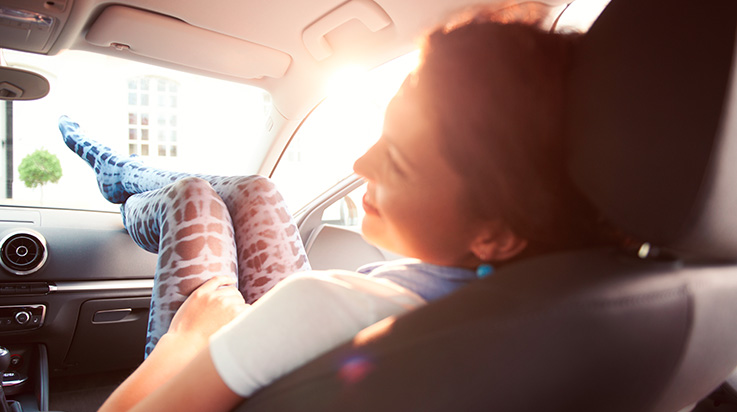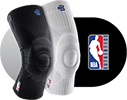Vein inflammation: what should you do when spider veins develop into a medical condition?

Vein problems are among the most common ailments in the United States. How do they develop? Why are women more frequently affected? How can you detect them early? What can you do to prevent them? Read more about these topics and about treatment and prevention options in our guide.
Our veins form part of a highly efficient network. Together with the arteries, they transport blood around the body. While oxygen and nutrient-rich blood is pumped through the arteries, the veins return the blood that is filled with waste products to the heart. Veins therefore have to cope with the full force of the blood circulating in the body. In the leg veins in particular, where the pumping power of the heart is insufficient, the blood must be returned using the veins’ own transport mechanisms.
Veins under constant pressure
In the leg veins, the so-called "calf muscle pump" transports blood to the heart. By alternating between tensing and relaxing, the calf muscles create a pumping and suction effect in the veins, which pushes the blood out of the legs toward the heart. Spaced a few centimeters apart, the venous valves ensure that the blood only moves toward the heart. Over the course of decades, this constant use often leads to wear in the vein walls. The walls of the veins become stretched and the venous valves stop closing completely, causing the collection of blood and overstretching in the next venous segment. Left untreated, this has negative consequences for the entire venous system of the leg. Allegedly harmless spider veins can develop into varicose veins, which in turn can develop into vein inflammation or even venous ulcers. In the worst-case scenario, this could even develop into a venous thrombosis, a blood clot that can cause a life-threatening pulmonary embolism.Who is particularly susceptible to vein problems?
Eighty percent of all patients with vein problems have a hereditary weakness in their connective tissue. The venous system in women comes under additional strain due to both weaker connective tissue in general and hormonal changes (during pregnancy, for example).Other factors can increase the risk
- Inactivity
- Standing or sitting for long periods of time
- Obesity
- Smoking
- Excessive alcohol consumption
- Unsuitable clothing (high-heeled shoes, excessively tight trousers)
Early diagnosis and treatment of vein problems
Swollen legs, itchiness and calf cramps can be early symptoms of vein problems. External symptoms on the legs such as an increased number of spider veins, varicose veins or skin discoloration can often also be a sign of vein problems. Many medical supply retailers offer vein function tests, but only your family physician can give you a reliable diagnosis. Ideally, you should consult your physician if you display any of these symptoms. The symptoms and accompanying signs are generally treatable, but veins that have already been damaged cannot be healed. Surgical procedures such as the removal and sclerotherapy of diseased veins can reduce congestion symptoms and the risk of thrombosis. To prevent additional vein problems or the further deterioration of the condition, patients are advised to lead a healthier lifestyle and to regularly wear clinically proven medical compression stockings.Strengthening veins with compression stockings
Compression stockings are made from an elastic fabric and come in four different compression classes that exert increasing amounts of pressure. During use, expanded veins are gently pressed together. This enables the venous valves to close properly again. As a result, circulation is improved, the vein weakness is reduced and the condition is prevented from progressing. As dilated veins do not regenerate no matter how much training you do, you should not wait too long before using compression stockings. To ensure the success of the treatment, it is essential to choose medical compression stockings that fit perfectly and to select the right type of stocking to suit your medical condition and lifestyle. It is best to do this in consultation with your family physician and medical retailer. You can, of course, also significantly support the treatment by strengthening your veins and leading a healthier lifestyle. Not only will these treatments give you nice-looking legs are also good for your veins.Checklist: what you can do yourself to prevent vein problems
- Eat a balanced diet with lots of fruit and fiber
- Do more exercise such as swimming, cycling or dancing
- Boost the circulation in your legs by washing them with cold water
- Walk barefoot now and again and put your feet up from time to time



